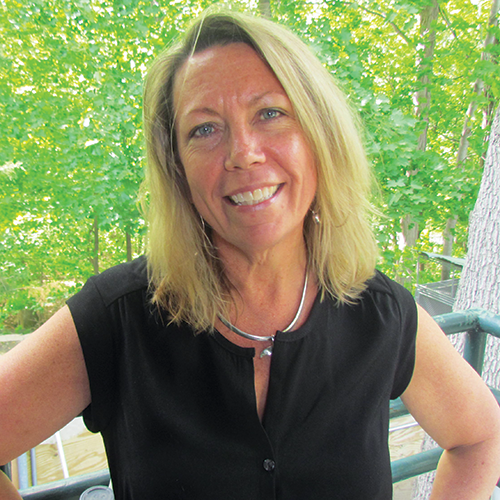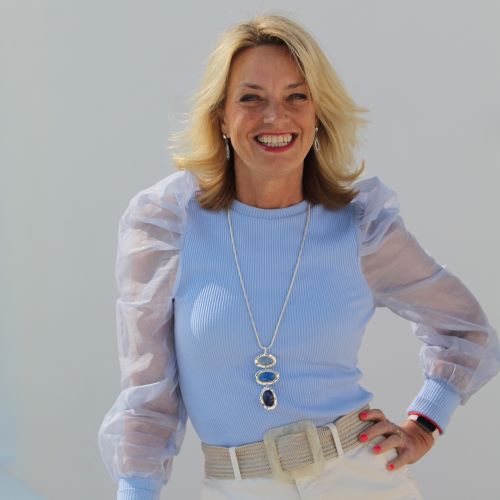Pamela Reed Sanchez
Episode 93: A Consistent Message from the Moment They Arrive, with Pamela Reed Sanchez
As tastes and sensibilities change, your organization needs to change with them, or else deal with a shrinking market share. If your organization has history, another challenge is perceptions that change more slowly than your brand message. That’s what was happening at Seneca Park Zoo in Rochester, NY. The zoo was growing as a leader in wildlife conservation from upstate New York all around the world.
On this episode of Destination on the Left, I speak with Pamela Reed Sanchez. Pamela has served as president and CEO of the Seneca Park Zoo Society since 2014. She’s a passionate advocate for species survival and brings this focus to the zoo society’s guest experience, education, and conservation programs. Prior to the zoo, she worked across various cultural and arts organizations, including the George Eastman Museum, her well-received TEDx Talk, “What The Killing of Cecil the Lion and Harambe the Gorilla Should Have Taught Us,” is a great example of the provocative ways Pamela encourages people to make changes in their everyday lives on behalf of conservation and species survival.
More on Pamela’s Background
Thank you for joining me, Pamela.
It’s a pleasure, Nicole. Thanks for having me.
I’m really looking forward to our conversation. Your bio is very interesting. I’m sure it’s got to be very exciting at the zoo. But before we get into the questions for today, could you share a little bit more about your story, and how you’ve gotten to where you are today? I find it adds so much more context to our conversation.
Sure, absolutely. So I describe myself as a child of the ‘70s. I grew up here in upstate New York, in Rochester. It was a time of global energy crisis. We had to stand in line for gas every other day. My dad would leave little Post-It notes on the light switches in our house saying, turn this off before you leave the room.
I began to be aware at 10 years old of how tenuous our natural resources are in this world. I went off to college and grad school. I studied public administration, organization dynamics, but also renewable energy and environmental policy. I did doctoral work at Syracuse University. Then I moved across the country to Arizona and taught at Arizona State for about two and a half years. At that point, I decided that academia really wasn’t my calling, but I didn’t feel like I was accomplishing enough directly. And so, I left academia and went into nonprofit management. I left conservation on the backburner at that point.
I worked in social services for a bit, and then switched to arts and culture, and really found a new home in arts and culture management. I had an opportunity to move back to this region that I so love, in 2002, and I became the director of strategic planning and resource development for the George Eastman Museum.
I spent 12 years there learning so much about that great institution and about its impact on our region and really honing my skills as a nonprofit executive.
I really wanted to be a number one. I wanted to be more of a community leader and had a call from a headhunting firm. When you’re number two, some places, you get a lot of those calls, and I ignored most of them. But this one was for an executive director position, a leading position. I followed up with it and found out that it was for the zoo. This zoo, which is a very special place, a fairly small footprint, but the programs here are so dynamic, and I don’t just mean onsite, what you see here. But so much of the conservation work that’s being done here is really extraordinary.
We are a national and international leader. So to have an opportunity to come and guide this institution from what it was to what it will be, we’re on the brink. We’ll talk more of this major transformation that we’re undergoing right now. So to return to my roots in conservation, and lead a great cultural attraction, it was as if every job that I’ve had up to here had led to this one. It’s a great feeling.
It’s so interesting, when I ask this question of our guests, more times than not, the journey winds its way and lands right where you’re supposed to be.
Long ago I heard that the career ladder is a spiral staircase, and it’s really true. As you wind your way up, you find that everything builds on itself. And sometimes what looks like a lateral move, it’s still moving you up, and it’s all leading to where you’re meant to be. I am so fortunate to have been selected to lead this organization, great place.
How to Stand Out From the Crowd: Customer Experience
That’s really terrific, and it brings you right back to your childhood, I love that connection too. Those experiences that happened early in life really just cement something in you. So I know this is going to be just an awesome conversation. Let’s start with creativity, thinking about how competitive our industry can be, the tourism and hospitality industry. Travelers, visitors have so many choices of places they can go. But not only that, they only have so much time.
I’m wondering what you’ve done at the zoo to really help cut through all of that noise and stand out from the crowd?
It’s a great question, and you know every year it seems that there’s more and more competition. About 70% of our visitors are actually local to Monroe County, and 30% are from outside the county. But we do have a pretty good visitation from tourists, people who will have to travel a bit to get here. But for those people in Monroe County, we’re competing against their child’s soccer games, travel lacrosse, and gymnastics. We’re competing against all of those other things that they’re doing in their home life.
But what we’ve discovered and what the industry has shown is that people are looking truly for a personalized experience. They want to do something that makes them feel good about themselves. Not just to have a good time, but they want to feel as though they are making a difference through the experiences that they participate in.
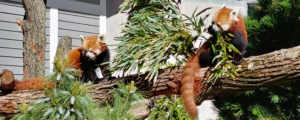
[bctt tweet=”“What we’ve discovered and what the industry has shown is that people are looking truly for a personalized experience.” -@prsanchez74 #podcast”]
A little over two years ago now, we undertook a rebranding of the zoo, and I should note here that my organization is the Zoo Society, and we are the private nonprofit partner of Monroe County’s Seneca Park Zoo. It requires both of those organizations to fully operate the zoo. The county side of it takes care of animal care, animal health, buildings, and maintenance. The society side is a lot about the non-animal experiences, the guest experiences here. So it’s food, and gifts, front gate, our education programs, our conservation action programs, marketing, and development; that all takes place in my side of the shop.
But in order to rebrand, you have to have everybody together at the table agreeing that this is the direction that we want to go. So it was leaders from Monroe County, and it was leaders from my board of directors, and some senior staff from both sides of the organization that came together, in a brand positioning statement.
There was obviously a lot of prep work in advance. We came out with a new brand positioning statement that makes clear this is the only place you can come for an animal-based experience, in which you make a difference for species survival simply by walking in the gate. You can help save animals from extinction, simply by visiting here.
Primarily our audiences are families, but we also are increasingly trying to target folks without families and young adults. We want to make sure that we are extending the brand to multiple audiences and intergenerational audiences. But we really do believe and we try to convey in everything that we do here, that just by coming on site, just by supporting this place with your admission dollars or your membership dollars, or by participating in a special event that we have, that you’re making a difference to save animals from extinction.
That helps educate people about what a zoo actually is because the zoo of my childhood is not what a zoo is today. Zoos were places where you came to see as many animals as possible, in a small place. Very similar to what you can do in an art gallery, where you go and you stand in front of one painting, and then you move over a few feet and you look at the next one. And that’s fine and good for an art gallery, but it doesn’t work anymore for animals. Not from an animal welfare perspective, not from teaching about what the animals face in nature, and what we can do about it.
So when you change your brand positioning, you change everything. We hired a local firm that does brand management to come up with new logo designs and new logo treatments. But you know, a brand is much more than a logo and a tagline. It’s about the way you position everything that you do. And so we take that very, very seriously, although we have a lot of fun with it.
So for example, ZooBrew, which is a fundraiser that we do once a month from May to September, on a Friday night. We used to call it the wildest happy hour in town. The slogan for it now is: Drink beer, save elephants. 50 cents of every ticket goes to the International Elephant Foundation, and we do other fundraising that night, that all goes to support elephant conservation. So people know when they’re coming that what they’re doing is supporting elephant conservation. Which immediately tells them elephants must be endangered, and there’s something I can do about that.
So all of those messages together help drive home that point of, just by coming here you’re making a difference. So that was a long answer to your question, but I think that’s really integral to everything that we’ve done here. Growing and building that brand, making sure people understand what a zoo really is, and then delivering on a promise when they get here, so they walk away knowing something that they didn’t know before, in terms of what they themselves can do to help save the animals that they see here.
That’s an awesome answer to the question, and it’s wonderful that it’s grounded in a strategy. You invested the time. You had to manage relationships between these two different organizations, to get everybody on board with where you were going, and then refocused on what it is really that you’re delivering and what your positioning really is. Taking that even further, how do we actually deliver that, so the people who are visiting understand that, and that we’re living up to that.
I love the example of the ZooBrew, and how you took that new positioning, and have reflected it in that event. I’m wondering, what other examples you can give in terms of the guest experience?
Absolutely, so the first thing when people come in the gate and they pay admission, they are asked, “Would you like to donate a dollar to rhino conservation, or to snow leopard conservation, we change out the species on a regular basis, and we raise funds for our conservation partners: the International Rhino Foundation, the Snow Leopard Trust, for Polar Bears International, for SANCCOB which is for African Penguins. So when they come, at the moment they arrive, the first question that they hear is, “Would you like to donate a dollar to help save Snow Leopards?” or whatever it might be.
So from the moment they get here, the message begins: this is a conservation organization and you can be a part of helping. And then there are different things that people hear throughout the year. During the summer we have programming every hour, and our zoo naturalist, who delivers a lot of those programs, always ends the presentation by talking about something that people can do in their own homes to help make a difference, or some responsible consumerism, or recycling or whatever it might be. Little tips that we give people, as to how to live more sustainably, or how to be a more responsible consumer.
Then as people leave, they often make a stop in the zoo shop, and when you’re in the zoo shop and you make a purchase, you are asked if you would like to round up your payment to help conservation efforts again. So from the moment you arrive to the moment you leave, there are little reminders in gentle ways, that you are at a conservation organization that is actively raising funds for international conservation efforts.
I appreciate how you thought through the whole visit and everywhere that they’re being touched, and how you are really starting the conversation from the moment they get there, I think that’s really fantastic.
Nicole, when you go to the restrooms here, there are messages about water saving and sustainability through water management. So little tips about if you want to save water, you can water your lawn in the early morning or late in the evening, so it’s not the middle of the day. That’s much more efficient for your lawn, and for water use. How if you turn off your water when you are shaving, you’ll save 25 gallons a month, little things like that.
If you order something from our food stand, you’ll see the signs on the garbage bins there, that talk about all our efforts in sustainability in our food service. We have done away with all single-use plastics on campus, other than what gets delivered in single-use plastic. So our straws and our lids for our cups are made of corn syrup, they’re biodegradable, compostable. The cups that people get their Cokes in are also biodegradable, compostable. The forks, the napkins, everything that we use is recyclable or compostable. So again, there’s messaging all through about the simple things that you can do.
When I arrived here, and I would go out and I would speak about the truth of what’s happening in natural range, 96 elephants a day are poached for their ivory, that’s 35,000 a year. And at that rate, we’re looking at extinction in 10 to 15 years, if nothing changes.
African penguins, there were once a million breeding pairs, in 1900 there were a million breeding pairs, we’re down to 18,000. And again, if nothing changes we’re looking at extinction in 15 to 20 years. It’s getting a message out. I’m one person and I’m here in Rochester, New York, what can I do? How can I possibly impact that? So shifting to a message of hope, and you can be a part of the solution, has really made a difference.
Taking the Zoo to the People
I think that’s wonderful. Those are great examples. You’re living it too, you’re not just saying it.
I want to switch gears just a little bit. Still talking about creativity, but I’d like to explore a time when you may have faced adversity or challenge, and hear what kind of creative solution might have come from that challenge. I find that we just learn so much from those times when we’re challenged, and we need to really think creatively to solve it. Do you have something that comes to mind that you can share with us?
Well, I’m going to go right back to brand. When I arrived at the Zoo Society, I found a lot of time my first year listening to people and going out and meeting people and asking, “Tell me what you know about the Seneca Park Zoo, what’s our brand?” I discovered the biggest challenge was about age. People felt that this zoo, in particular, was for children. They would say, “Oh I used to be a member but my kids aged out, and I don’t have grandchildren yet.” And I would say, “You know, you don’t have to have a child with you when you come to the zoo, you can come as an adult. We’re a conservation organization and worthwhile of supporting.”
What it really came down to is, people not understanding what zoos are today. That we truly are conservation organizations. We are very involved in cooperative breeding programs to make sure that there’s a sustainable population from a genetic standpoint in conservation care, to ensure the survivability of the species long term, not for zoos, but for natural range.
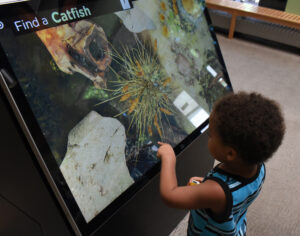
[bctt tweet=”“What it really came down to is, people not understanding what zoos are today. That we truly are conservation organizations.” – @prsanchez74 #podcast”]
There’s a study that the Association of Zoos and Aquariums commissioned a few years ago that asked millennials, “Do you believe in the mission of zoos and aquariums?” And when the question was asked that way, 70% or 75% of millennials said, “No.” When the question was rephrased and said, “The mission of zoos and aquariums is to save animals from extinction, do you support the mission of zoos and aquariums?” It very quickly switched to 70% to 75% saying yes.
So changing the perception of people about what a zoo is, is a big challenge. We had to start to sort of evangelize offsite, about what zoos are. That was a very different way of thinking, to move from serving four and five-year-olds really well onsite, to serving the entire community whether they come to the zoo or not. That’s a big shift in the way you do programs and the way you do outreach.
I think that’s a really good point because it’s one thing to change the perception of someone who’s already coming and already has some level of understanding, but somebody who’s not even coming, that’s definitely a challenge. So can you talk a little bit about how you did start to change that programming offsite?
Well, one of the first things that we did is to engage in regional conservation. We’d really been focusing all of our marketing message on visiting the zoo, that onsite message. We took a risk and did some things offsite. One of the things that we did that made the biggest impact was a biodiversity assessment in the Genesee River, with a National Geographic photographer named David Liittschwager, who created a project called One Cubic Foot. One Cubic Foot is really just the idea of what uses a small space as a habitat. In the course of 24 hours, how many creatures are using that one small space?
David had done this project in South Africa, and under the Golden Gate Bridge, and Central Park, and Papua New Guinea, and many different places around the world. But this is the first time that he came and did it in what had been really a pretty industrial area, down across from Turning Point Park here in Rochester. The Genesee River has been on the EPAs area of concern watch list for many, many years.
We’ve done a great job here regionally in cleaning up the river and getting it healthier and safer and less polluted, but we have a ways to go. This was the biodiversity assessment that was done. We found well over 124 species.
We also worked in partnership with the Smithsonian Museum of Natural History to do DNA barcoding on each one of those species and then uploaded that information to the Bar Code Of Life Database, a database used internationally by scientists and laypeople to give us more knowledge about our world.
Bringing a National Geographic photographer here to Rochester had a nice ripple effect. When he came, he spoke at George Eastman Museum. After he left, and we had all of the photographs, we did a show at Rocco in an art gallery here, showing Rochester these incredible photographs from the river. We had people telling us, “You’re not gonna find anything in that brown polluted water, and you’ll find dead bodies!” And lo and behold we didn’t. We found the story of the river in terms of species that really thrive in dirty water, in polluted water, and we found species that thrive in good quality oxygenated water. So the story that we can tell about the river, from what we found in the biodiversity assessment, is a really important one.
And now people can come here onsite and learn about it in our new Immersive Gaming Spaces Center for biodiversity exploration, which uses David’s images and the story of the river to connect human impact, human actions to water quality and the health of the river.
We’ve been working at this for three years, and it really has become a part of the way we teach. We regularly do little replications of One Cubic Foot, to try to teach about biodiversity, and we discovered that the more we do this offsite and get people to be quiet and look at a small space, the more they connect with nature of the more excited they get about learning more and discovering.
That’s really at the root of what we want everyone to do, is feel connected to nature, because then once you care about it, once you’re connected you start caring, and then you want to act on behalf of it. So taking that risk of doing the programs offsite, and then teaching it onsite and offsite, has really been remarkably helpful for us in getting our message out, as to what a zoo really is, and becoming relevant to the community in terms of trying to help solve a regional problem. We’re not just trying to save lemurs in Madagascar, and save orangutans in Borneo. We care about this region, and we’re important to our community here, and actively involved in it. That was something very new for the Seneca Park Zoo.
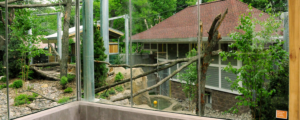
[bctt tweet=”“What we want everyone to do, is feel connected to nature, because then once you care about it, once you’re connected you start caring, and then you want to act on behalf of it.” -@prsanchez74 #podcast”]
That’s really incredible. There are just so many legs to what you just described, but I’ll boil it down to make sure listeners caught all that you just shared. What I think is really incredible about that, first of all, you came up with a project and were able to partner with an organization such as National Geographic, and bring that photographer into town. I love that then you had this tie to the George Eastman Museum because that really is a natural tie with the photography piece. You’ve created this research, if you will, for the community to help benefit the community. But then, you were able to connect that back and build this new exhibit out at the Seneca Park Zoo, that really ties it all together using the photography. That is an awesome example of what really can be done when you are faced with a challenge and think outside the box and very creatively.
You know, you just have to. I’m a big fan of David Novak, I don’t know if you’ve read Taking People With You, but David was the CEO of YUM, which was KFC and Taco Bell. He grew that company exponentially, particularly with expansion internationally. Two big takeaways from David’s book: One is: If you want to get better, you have to talk to the people who are the direct line, who are closest to the product and product delivery. Everything that we do here, we believe in that fully. That the people who are taking tickets at the front gate, handing the Coke to the guests, they’re much closer to how things really operate here in the guest experience. So we listen to them regularly. But the second huge takeaway is, David, says, “If you want to grow your business by two or three percent, you can do pretty much the same thing that you’re doing, and just tweak it a little bit. But if you want to grow by 20%, you have to throw away the model, and really take some risks and try something different.” And if you end up failing and only achieve a 10% growth, that’s still far better than 2% or 3% growth.
I knew when I started here, that we were going to have this big challenge of raising millions and millions of dollars for our capital transformation. And so we had a short window of time in which I needed to redefine what the zoo was in the public eye so that they would know that they were investing in a conservation organization that also happens to be a wonderful cultural attraction and tourist destination. But at heart, it’s a conservation organization that helps us sustain our region and the globe.
That is a great segue for you to share things that are happening in the future, that you’re very excited about. So go ahead and share with us what is happening at the zoo, because I know there’s a lot to tell.
There is a lot happening here. We completed a master plan, Seneca Park Zoo. It’s a 10-year long range plan and, you are beginning to see the changes happening now, from a physical campus aspect.
In June, we opened two new habitats right in the center of the zoo. It’s an area dedicated to telling the story of Cold Asia. So the first two habitats that we have built are for snow leopards and for red panda. We’ve had snow leopards here at Seneca Park Zoo for many, many years, but their habitat was in the main building. It was on the east side of the building, a lot of people had never seen them. They didn’t walk along that side of the building. But we are completely devoted to snow leopards. So we wanted to build them the habitat that they deserve, a very naturalistic habitat, lots of climbing space, and we also added the red panda, which is a brand new species for us. It’s a terrific, terrific exhibit. You can get extremely close. The snow leopards, there is glass around the enclosure, there’s some glass viewing areas, as well as mesh that keeps them in. And the snow leopards tend to like to hang out right at the glass. So you can be face to face with a snow leopard.
The red pandas have a great ability to climb. They don’t jump. And so there’s open air, and we don’t worry about them getting out of their habitat. And people just have this incredible experience, in a very contemporary setting, but also naturalistic habitats right in the center of the zoo.
So that was the first thing to happen earlier this year. September 13th, we will open five new acres for the community, Animals of the Savannah. From an animal welfare perspective, these habitats are incredible, they’re first rate. There’s nobody who will walk in and think, well this isn’t enough space, or how could you possibly do this, they’re wonderful immersive habitats. From a guest perspective, there’s never been anything like this in the region.
We’ve moved our rhino, Bill, down to the Africa area where he belongs, and we’ll be able to bring in another rhino as a companion for him later.
And then there’s an indoor space that has another 16 species in it, including naked mole rats and rock hyrax. There’s an aviary, there’s a beautifully carved tree that has six microhabitats for some reptiles and amphibians and insects. So it’s this incredible first-class experience, that also features the first indoor giraffe feeding experience anywhere in North America. We’re not sure whether there’s one in Europe, I haven’t done the work on that, but we are aware of no other zoo that offers an indoor giraffe feeding experience. And that’s really important in this climate, because while during the beautiful weather, the warm weather, the giraffe feeding will take place outside. Once it gets to be cold and a little icy underfoot, the giraffes need to stay in their day barn. The day barn I think is the second largest in the country of accredited zoos, and the only one that will offer that indoor giraffe feeding. So that guests will know year round they have an opportunity to get up close and personal with these extraordinary creatures.
So that’s really exciting. There are also new guest amenities. There’s a new structure called the Savannah Outpost. It has gifts and food, and there’s a tram stop, we’re adding a tram to the zoo experience, which is wonderful. Because we are a long linear zoo, and this five-acre expansion has made us longer and more linear, so at this point, guests will be able to take the tram from the front of the zoo, down to the northernmost part of the zoo and back again.
That’s a really wonderful guest amenity that people have been asking for. And then right after Labor Day, the zoo main building will begin coming down. That building opened in 1931. It’s a really great example of old-style menagerie zoo but has outlived its usefulness by many, many decades. So it will begin coming down this fall, which is very exciting because I think it’s been a barrier for us first for attendance. People have it in their memory animals in cages. If that’s your memory, why would you come back or bring your children and grandchildren?
So just removing that will be a really great removal of a major barrier. Then we begin the work on planning the rebuild of the entire front third of the zoo. I should also add, that we are most likely adding a new restaurant in the center of the zoo next year. We’re just finalizing some funding and finishing fundraising on being able to do that. It’s called the Trail Side Café, and it will have indoor and outdoor seating, looking at doing a beer and wine license for it. It will be a much more contemporary space for people.
As a culture, we expect more from concession stands, even when they’re at zoos and fairs and things like that. So the ability to really upgrade that experience for people will be important. But as I said, this fall we’ll start the planning process with the county for the new front third of zoo.
At this point what the master plan calls for, is a large tropics complex that would introduce guests to the ecosystem or Borneo, Madagascar and Congo. Congo would be brand new for us, and Congo means gorillas. So that’s very exciting for us. And then we’ll also add a new visitor services building in the front, and a new conservation resource center that will offer even space and adult classrooms and some office space, those kinds of things.
It’s a busy time!
I think any one thing that you just described could be considered transformational, but when you put it all together, it truly is transformational. What you were describing stays very true to your positioning. You were talking about the experience for the animals, as well as the consideration of the experience for the visitor, and balancing that. I think that’s really what’s going to make this so special.
You know, there’s a couple of things on that. If you come to a zoo, and you feel that the animal’s welfare is compromised in some way, and that is based on our own human perception what we see with our own eyes. It matters little what the messaging is if your immediate perception is that you don’t think it’s good animal welfare. We can never get the guests to move beyond that. The animals are here because it serves a higher purpose, to connect people with what’s happening in the natural world, and how they could become a part of helping that.
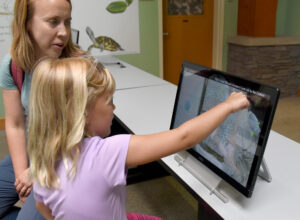
[bctt tweet=”“The animals are here because it serves a higher purpose, to connect people with what’s happening in the natural world, and how they could become a part of helping that.” – @prsanchez74 #podcast”]
So we have to get people beyond the animal welfare concerns, and the habitats definitely, definitely do that.
That’s great.
The animal health staff do everything that they can to provide them with the best diet, provide them with enriching activities, promote their physical and mental wellbeing. But it doesn’t matter what we do or say about that, if your perception is, you know, spider monkeys in a cage, that is hard to overcome.
The other thing we’ve learned is that animals do better when they are in more naturalistic settings. The concrete and the bars don’t do it. So you put an animal in a more naturalistic setting, give it more enriching opportunities, and you see the breeding rates go up, and the stress levels go down. You know we can measure that, the cortisol level. So we know that more naturalistic habitats are not only better from the public’s perspective, but they really are much better from the animal’s perspective. And it’s so interesting because if you think about the environments that you and I work in every day, why is it so clear that we know that being in nature is better for animals, including human beings, and we don’t build our offices to reflect that at all.
You spend time in nature, and your stress level goes down, your heart rate goes down, your mental health is better. There was just a study that came out in the Journal of American Medicine Association about the importance of green space. And there was a study done in Philadelphia that looked at all of these vacant lots, and they took a third of the lots and they kept them vacant. A third of them they cleaned them up, and a third of them they cleaned them up and they added green space. And then they studied the impact of the mental health of the people of the city around them, and discovered, not surprisingly, but great to have the evidence, that the people who lived and spent time near the lots that were green, showed better physical and mental health. It’s just we are all animals. We all need exposure to nature. And that’s what a zoo can provide to people too.
Community Building: One Cubic Foot at a Time
That’s really terrific. Well, I knew this conversation would be really good. I’d like to ask you one more question before we close out, and that is at it relates to collaboration. You’ve already actually talked a lot about it, just in your answers to the previous questions. You’ve talked about the collaboration that’s happened with the county, the collaboration that you’ve had with the George Eastman Museum and with the community on that biodiversity project. There’s so much of it. But I’d like to ask you to think about a time perhaps when you have collaborated in a program, it’s what I like to call Coopetition, where perceived competitors seem to come together and collaborate and cooperate on a program, to make something that’s much bigger than they can do on their own. I’m wondering if there’s an example of or a time, that co-opetition has really worked for you.
I’ll go back to One Cubic Foot. We actually created a One Cubic Foot Community Advisory Group, that was made of 25 different organizations. Some of which, like George Eastman Museum were involved from an arts angle, but many of them were involved because they care about natural resources, they play a role in the river. So it was Water Education Collaborative, and the Stormwater Coalition, the Audubon Society, Nature Conservancy, Genesee Land Trust, Center for Environmental Inquiry, all of these different organizations that might have been seen as some kind of competitors and instead we all came together behind this project and helped promote it.
I’m such a huge believer in collaboration and partnership, it’s actually part of our workplace values here. I think if you find ways of working with other organizations that share common values, but can expose you to new audiences and can extend your reach, that’s a win-win for everybody. Sometimes you find those in unexpected ways. Some of the marketing partnerships that we have had, I think have been head turning. We partnered with the Amerks, this past year, our hockey team here, the Rochester Amerks. All of February was Defend the Ice Month. And at every home game, they had messaging on the importance of ice for polar bears. It was just a really great collaboration. Our Zoo Mobile went there to do a lot of education. We had a big Defend The Ice Night. We did those star tosses that they do, and they had a jersey auction, they created this great polar bear graphic for all the players to wear on their jerseys and they did an auction, and that auction of jerseys helps pay for the entire partnership from a marketing perspective.
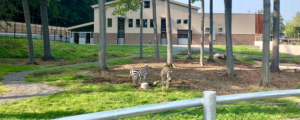
[bctt tweet=”“If you find ways of working with other organizations that share common values, but can expose you to new audiences and can extend your reach, that’s a win-win for everybody.” – @prsanchez74 #podcast #WhyCollaborate”]
So it not only extended our brand, extended our reach, reminded people that zoos are open year-round and not just in the summer, but it raised significant dollars also for Polar Bears International, and it was a fantastic partnership.
We do something similar with the Redwings here, the Rochester Redwings, we just had Naked Mole Rat Night, where the first thousand people got a Redwings hat that had a naked mole rat on it. So we like to think about creative ways of partnering to extend our brands, extend our audience offsite.
I think that those are three really good points that you just made, in terms of looking for those partnerships, understanding that you do have common values and how you’re going to share audiences that way.
And one of the things I love about this community here, and I think this is true of Upstate New York in general, is that we are collaborative. We don’t see each other as competitors, we really believe so much in what we’re doing for this community, whether it’s for our residents or to be a stronger cultural destination for people. You see more and more collaboration and recognition, that working together helps all of us.
Absolutely. And with that, I think this has been a great conversation. I want to thank you so much for being so open.
It’s been a pleasure.
We value your thoughts and feedback and would love to hear from you. Leave us a review on your favorite streaming platform to let us know what you want to hear more of. Here is a quick tutorial on how to leave us a rating and review on iTunes!
